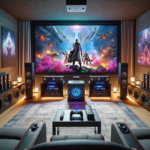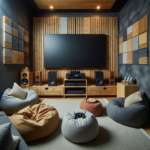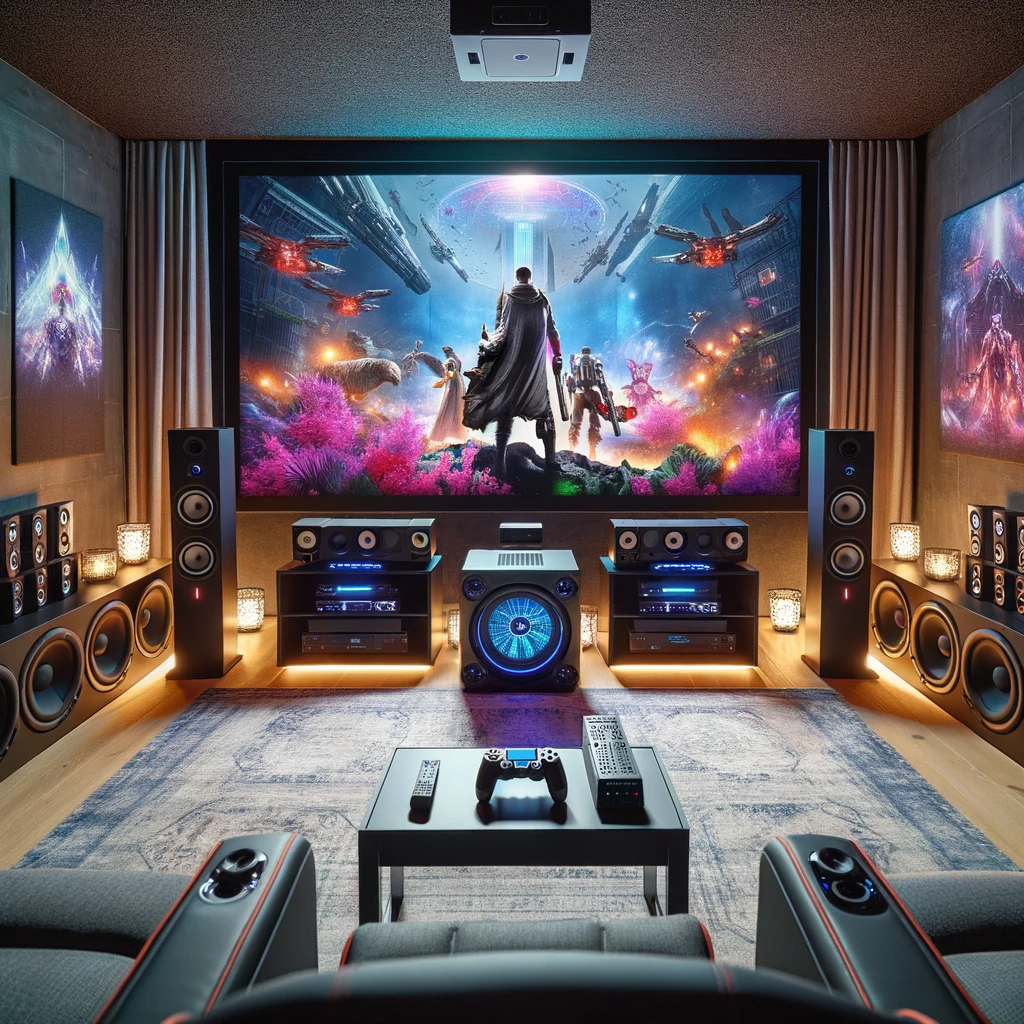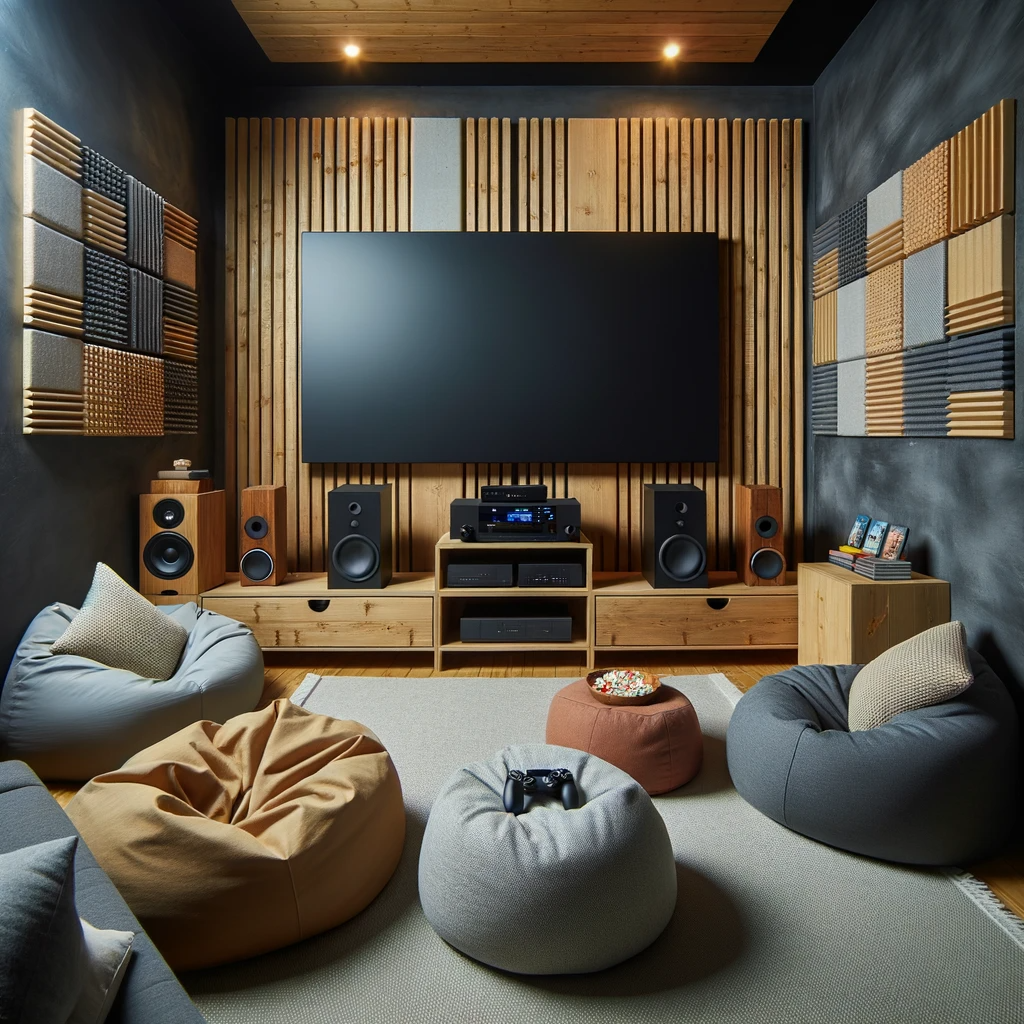Introduction
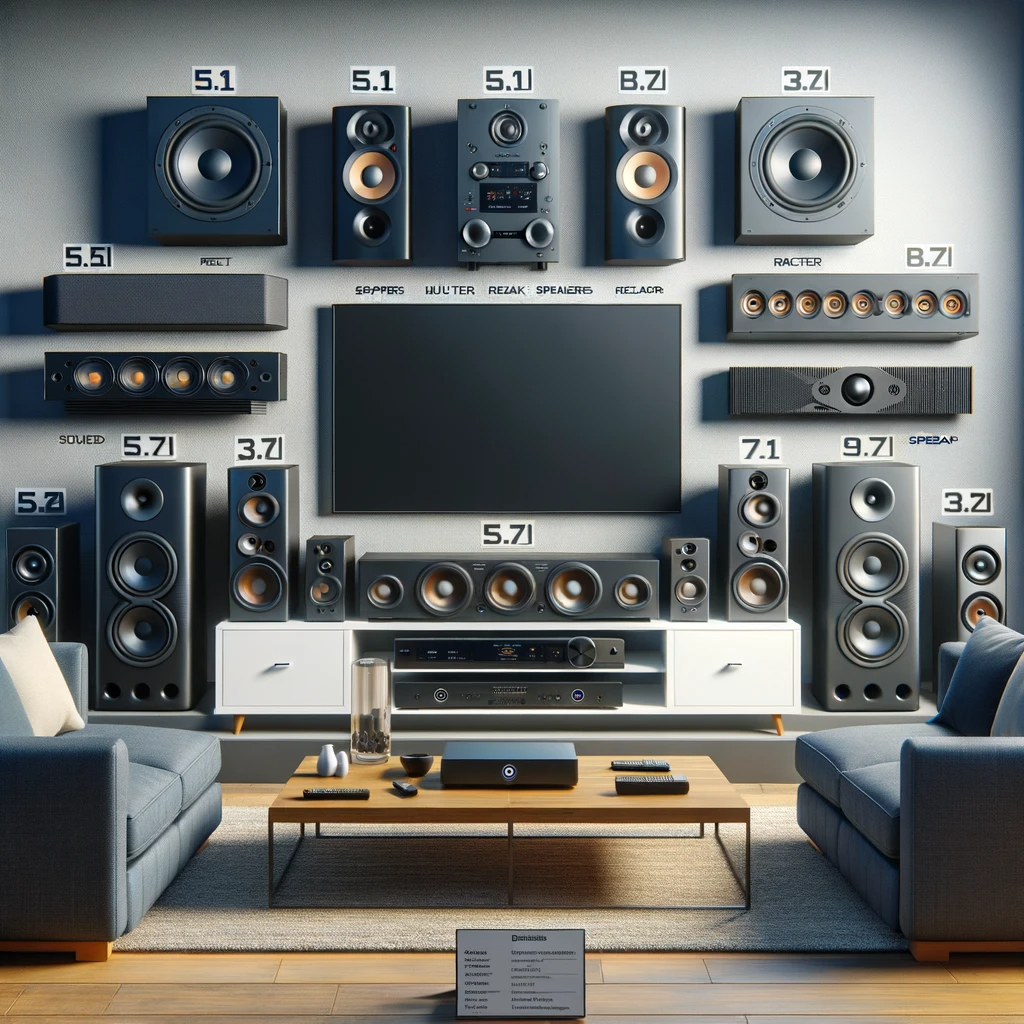
The Immersive Audio Experience
Surround sound systems are audio setups designed to create a captivating and immersive audio experience. They utilize multiple speakers strategically placed around the listening area to reproduce sound from different directions, enveloping the listener in a three-dimensional audio environment.
Definition of Surround Sound Systems
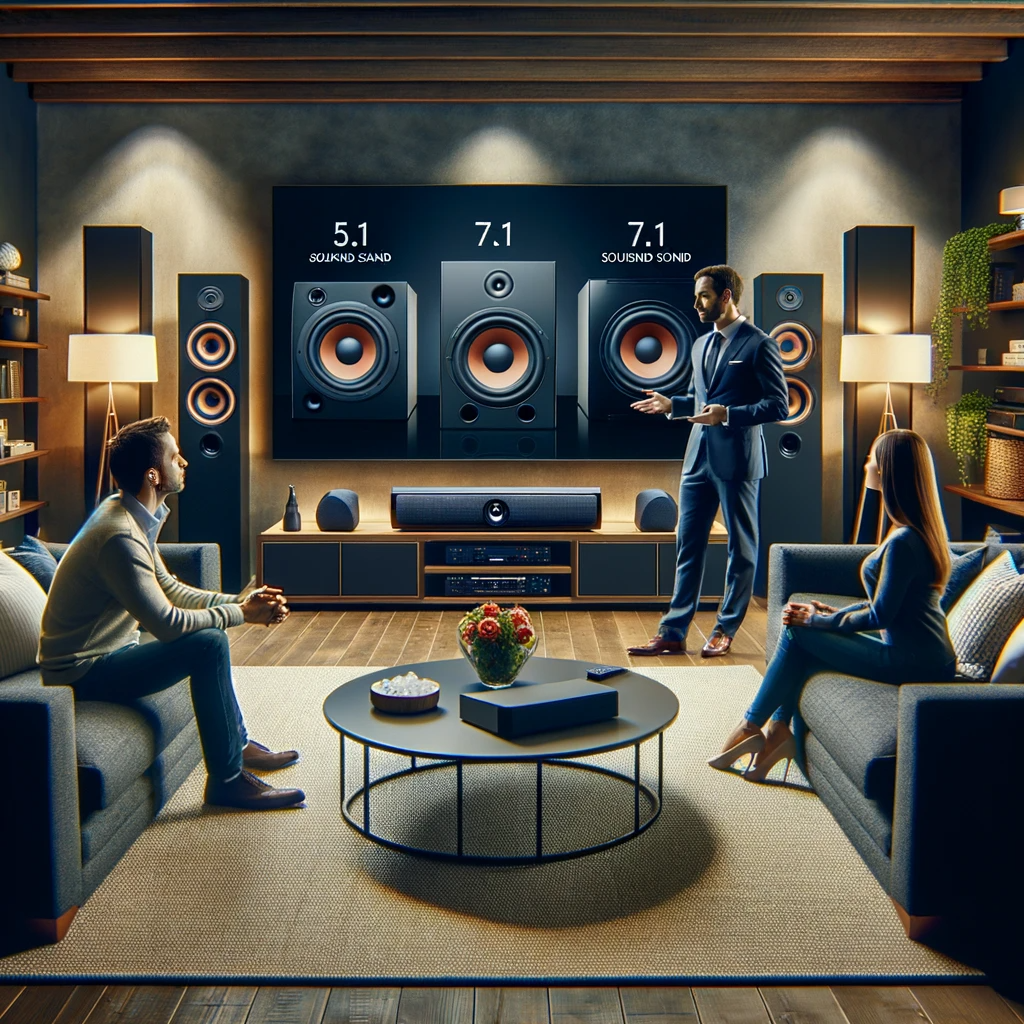
Surround sound systems consist of various audio components that work together to deliver high-quality audio reproduction. These components typically include an audio source, such as a DVD player or streaming device, an AV receiver or amplifier, multiple speakers placed strategically around the room, and wiring/cables for connectivity.
Importance of Audio Quality in Enhancing the Entertainment Experience
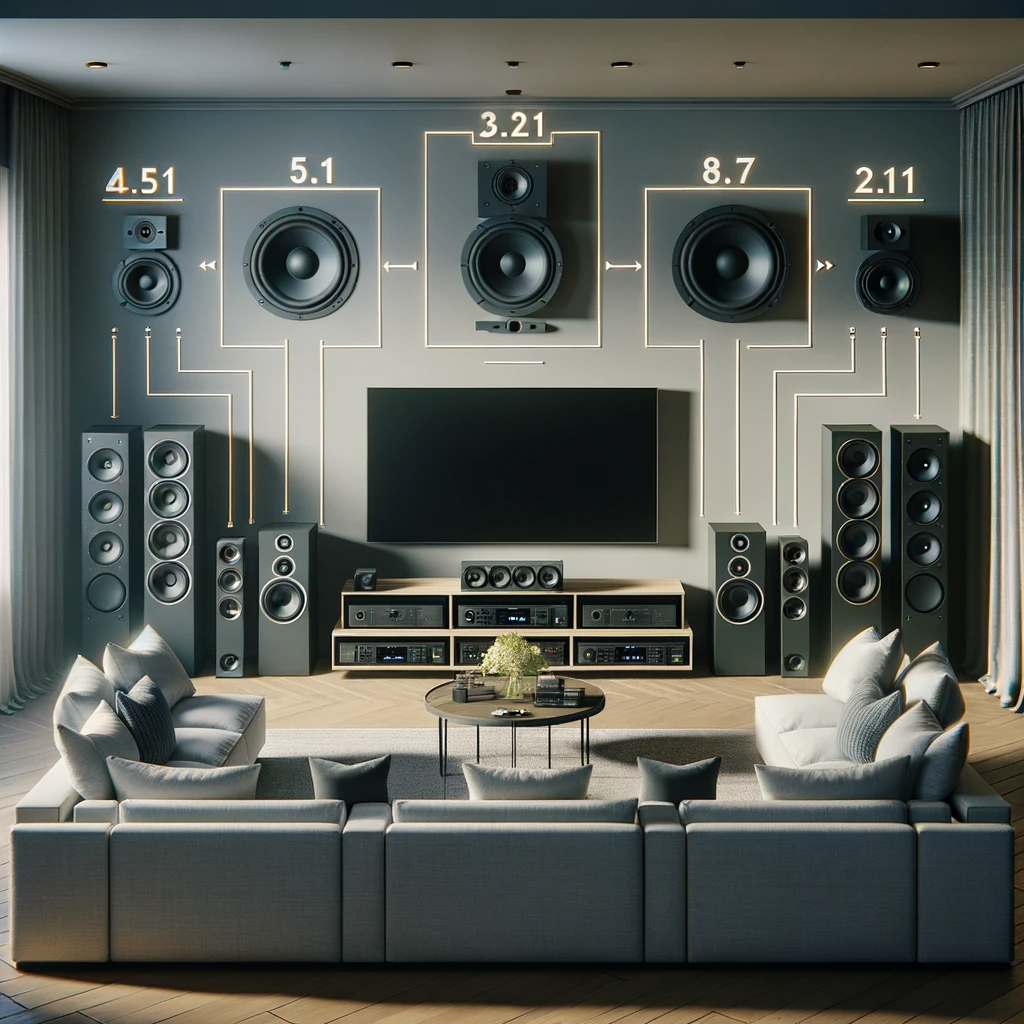
Immersive Visuals Meet Captivating Sound
While visuals play a crucial role in our entertainment experiences, it is often the soundscape that truly elevates our immersion and emotional engagement. High-quality audio enhances movies, TV shows, music, and games by providing depth, clarity, and spatial accuracy. It allows us to feel like we’re part of the story or performance happening on screen.
The Impact of Audio Quality on Emotional Connection
Audio quality has a direct impact on our emotional connection with media content. Crisp dialogue reproduction ensures that every word is clearly understood, while precise directionality immerses us further into the action unfolding before our eyes. The dynamic range offered by surround sound systems heightens dramatic moments by emphasizing subtle details and crafting impactful crescendos.
By faithfully reproducing sounds as intended by creators – be it explosions or delicate whispers – high-quality audio amplifies both excitement and intimacy within entertainment experiences. By combining exceptional visual presentation with immersive soundscapes delivered through surround sound systems, we create an unforgettable multisensory adventure that transports us beyond mere spectators into active participants in the worlds unfolding before us.
High-Level Overview of Surround Sound Systems
Basic components of a surround sound system
A surround sound system consists of several essential components. The audio source, such as a DVD player or streaming device, provides the content that will be played through the speakers. An AV receiver or amplifier acts as the central hub, receiving audio signals from the source and distributing them to the speakers.
The speakers play a crucial role in creating an immersive audio experience. They are typically divided into different categories: front speakers (left and right), center speaker, rear speakers, and a subwoofer.
Audio source (e.g., DVD player, streaming device)
The audio source is responsible for providing the content that will be played through the surround sound system. It can be a DVD player, Blu-ray player, gaming console, streaming device (e.g., Apple TV, Roku), or even a computer or smartphone connected via HDMI or Bluetooth. The quality and format of the content being played will significantly impact the overall audio experience.
AV receiver or amplifier
An AV receiver or amplifier serves as the heart of a surround sound system. It receives audio signals from the source device and amplifies them to power the speakers. Additionally, it performs essential functions like decoding different audio formats and managing audio settings like volume control and equalization.
Speakers (front, center, rear, subwoofer)
Front speakers are typically placed to create an immersive stereo effect by reproducing sounds coming from either side of the listener. The center speaker plays a critical role in anchoring dialogue and other central sounds to enhance clarity and ensure proper localization on-screen.
Rear speakers are responsible for reproducing ambient sounds and adding depth to create a sense of envelopment. Subwoofers handle low-frequency sounds, such as deep bass, adding impact and richness to the audio experience.
Wiring and cables
Wiring and cables play a crucial role in connecting all the components of a surround sound system. Speaker wires are used to connect the speakers to the AV receiver or amplifier, ensuring proper signal transmission.
Optical or HDMI cables are commonly used to connect the audio source to the AV receiver or amplifier for high-quality digital audio transmission. Proper cable management is essential to maintain a neat and organized setup while minimizing interference or signal loss.
Common Surround Sound Formats
Dolby Digital
Dolby Digital technology has a rich history and has significantly contributed to the advancement of surround sound systems. It was developed by Dolby Laboratories in the 1980s as an audio compression format specifically designed for cinema and home theater applications. Over time, it has become the most widely used digital audio technology in the entertainment industry.
The features and benefits of Dolby Digital are impressive, making it a popular choice for both content creators and consumers. With Dolby Digital, multi-channel audio is encoded into separate tracks, allowing for precise placement of sound effects and creating a truly immersive experience.
The format supports up to 5.1 channels, including front left/right speakers, a center speaker, rear left/right speakers, and a subwoofer. This configuration enables realistic spatial positioning of sounds and enhances the overall quality of audio playback.
DTS (Digital Theater Systems)
DTS technology emerged as a competitor to Dolby Digital in the mid-1990s but quickly gained recognition for its unique characteristics. Originally developed by DTS Inc., it offers an alternative approach to surround sound encoding and decoding.
The introduction of DTS technology brought several advantages and differences compared to other formats like Dolby Digital. DTS focuses on maintaining audio quality during compression by using less aggressive data compression techniques than its counterparts.
This results in higher fidelity sound reproduction with greater detail and clarity. Furthermore, DTS technology originated from the film industry’s need for high-quality audio in movie theaters.
It was designed to replicate the cinematic experience at home by providing immersive soundscapes with realistic effects. Overall, both Dolby Digital and DTS have played vital roles in shaping modern surround sound systems by offering distinct features that cater to different preferences among consumers and content creators alike.
Different Speaker Configurations for Surround Sound Systems
5.1 Channel System
Explanation of the speaker layout: The 5.1 channel system consists of a front left speaker, a front right speaker, a center speaker, two rear speakers (left and right), and a subwoofer. Ideal for small to medium-sized rooms: The 5.1 channel system is well-suited for smaller to medium-sized rooms as it provides an immersive audio experience without overwhelming the space.
7.1 Channel System
Introduction to additional speakers in a 7.1 channel system: In addition to the speakers found in the 5.1 channel system, the 7.1 channel system includes two additional rear back speakers (left and right). Benefits of increased speaker configuration: The increased number of speakers in a 7.1 channel system offers several benefits, particularly for larger rooms or dedicated home theaters.
These extra rear back speakers enhance spatial accuracy, creating an even more immersive soundstage that surrounds the listener from all directions. The additional depth and realism provided by these rear back speakers make action scenes more engaging and create a more lifelike cinematic experience.
Advanced Surround Sound Technologies
Dolby Atmos
Introduction to Dolby Atmos technology and its unique features: – Dolby Atmos is an advanced surround sound technology that revolutionizes the audio experience.
- Dolby Atmos creates a three-dimensional sound environment by incorporating overhead speakers or upward-firing speakers.
- It allows sounds to be precisely placed and move in three-dimensional space, providing a more immersive and realistic audio experience. Advantages over traditional surround sound systems:
- Dolby Atmos offers a greater sense of depth and dimensionality, making you feel like you are truly inside the movie or game.
- With traditional surround sound systems, sounds are limited to specific channels. In contrast, Dolby Atmos enables individual audio objects to move freely around the listener, enhancing immersion.
- The use of overhead or upward-firing speakers adds height information to the audio mix, resulting in a more lifelike soundstage.
DTS:X
Explanation of DTS:X immersive audio format:
- DTS:X is another cutting-edge immersive audio format aiming to enhance the listening experience.
- DTS:X utilizes object-based audio technology, similar to Dolby Atmos.
- DTS:X allows for flexible placement of speakers within a room and provides precise positioning of sounds for an incredibly realistic effect.
Comparison with other advanced technologies like Dolby Atmos:
- Both DTS:X and Dolby Atmos offer similar benefits in terms of creating an immersive listening environment
- However, there may be differences in how they handle certain aspects such as speaker configuration or fine-tuning capabilities.
- Ultimately, the choice between these technologies comes down to personal preference and compatibility with one’s existing equipment.
Conclusion
Advanced surround sound technologies like Dolby Atmos and DTS:X have revolutionized the way we experience audio entertainment. They bring movies, music, and games to life with their three-dimensional soundscapes and precise sound object placement.
Whether it’s the dynamic overhead effects of Dolby Atmos or the flexibility of speaker placement in DTS:X, these technologies offer incredible advantages over traditional surround sound systems.
By immersing ourselves in these advanced audio formats, we can elevate our entertainment experiences to new heights. So, sit back, relax, and let the magic of advanced surround sound technologies transport you into a world of captivating audio adventures.

